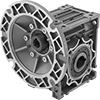Filter by
Speed Ratio
Output Shaft Diameter
Maximum Input Power
Output Shaft Type
Shaft Orientation
Gear Box Input Connection
Gear Box Output Connection
Maximum Output Torque @ Input Speed
Motor Frame Size
Input Shaft Rotation
Maximum Output Speed
Shaft Diameter
Output Shaft Location
Overall Height
About Shafts
More







































































